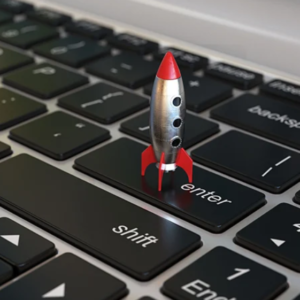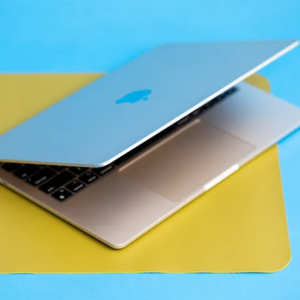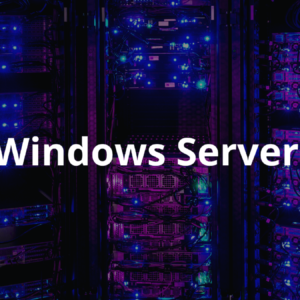How to make your slow laptop faster?
If your laptop is running slow, there are several ways to speed it up. These solutions range from software optimizations to hardware upgrades. Here’s a step-by-step guide:
1. Check for Malware and Viruses
- Use Antivirus Software: Run a full system scan with a reliable antivirus program to detect and remove malware or viruses, which can slow down your system.
- Malware Removal Tools: Use tools like Malwarebytes or Windows Defender to clean up potential threats.
2. Manage Startup Programs
Many applications launch automatically when you start your laptop, which can significantly slow down boot times and overall performance.
- On Windows:
- Open the Task Manager (Ctrl + Shift + Esc).
- Go to the Startup tab and disable unnecessary programs from starting automatically.
- On macOS:
- Go to System Preferences > Users & Groups.
- Select your user account, click on Login Items, and remove any unnecessary apps.
3. Free Up Disk Space
- Delete Unnecessary Files: Unused files, old downloads, and temporary files can take up valuable space.
- On Windows, use Disk Cleanup to remove temporary files.
- On macOS, check the Storage Management tool to clean up space.
- Uninstall Unused Applications: Go through your programs and uninstall those you no longer need.
Tip: Aim to keep at least 15-20% of your hard drive free for optimal performance.
4. Disable Visual Effects
Fancy visual effects can slow down your laptop, especially if it has limited hardware resources.
- On Windows:
- Right-click This PC and select Properties > Advanced system settings.
- Under Performance, click Settings, and select Adjust for best performance to disable animations and visual effects.
- On macOS:
- Go to System Preferences > Accessibility > Display and check Reduce motion.
5. Upgrade RAM (Memory)
- Add More RAM: If your laptop has less than 8GB of RAM, upgrading to 8GB or more can significantly improve performance, especially if you run multiple programs or use memory-intensive software.
- Check your laptop’s specifications to see how much RAM it can support, then buy compatible memory sticks and install them.
6. Switch to SSD (Solid-State Drive)
- Replace HDD with SSD: If your laptop has a traditional hard disk drive (HDD), consider upgrading to an SSD. SSDs are much faster than HDDs, and the difference in speed—especially in boot times, loading apps, and transferring files—can be dramatic.
- You can clone your existing drive to the SSD or do a clean install of the operating system.
7. Keep the Operating System and Drivers Updated
- Update Windows or macOS: Ensure you’re running the latest version of your operating system, as updates often include performance improvements and bug fixes.
- Update Drivers: Make sure all drivers (especially for graphics, sound, and network) are up-to-date. You can use tools like Driver Booster (Windows) or rely on macOS’s built-in updates.
8. Reduce Browser Load
Web browsers can consume a lot of memory, especially if you have multiple tabs open.
- Limit Open Tabs: Close unused tabs or use browser extensions like OneTab to manage open tabs.
- Clear Browser Cache: Regularly clear your browser’s cache and cookies to free up space and improve browsing speed.
- Disable Unnecessary Extensions: Remove or disable browser extensions that you no longer use.
9. Optimize Power Settings
- On Windows: Go to Control Panel > Power Options and set your laptop to High performance mode.
- On macOS: Go to System Preferences > Energy Saver and adjust settings to prioritize performance over battery life.
10. Defragment Hard Drive (HDD Only)
- If you’re using a traditional hard drive (HDD), defragmenting can help speed it up. This isn’t necessary for SSDs.
- On Windows:
- Search for Defragment and Optimize Drives and run the tool.
- On macOS: Defragmentation is not necessary, as macOS handles disk optimization automatically.
11. Close Unnecessary Background Processes
- On Windows: Open Task Manager (Ctrl + Shift + Esc), check which processes are consuming high resources, and close them if they’re unnecessary.
- On macOS: Use the Activity Monitor (found in Applications > Utilities) to manage resource-heavy processes.
12. Reinstall or Refresh the Operating System
If your laptop is still slow after trying these steps, a clean installation or refresh of your operating system can often make a big difference.
- On Windows: Use the Reset this PC feature to reinstall Windows without losing your files, or perform a full clean installation.
- On macOS: Use macOS Recovery to reinstall macOS without losing data.
By following these steps, you should see a noticeable improvement in your laptop’s speed and performance. If the problem persists, upgrading hardware (RAM or SSD) is one of the most effective ways to boost performance.
Share this content:







